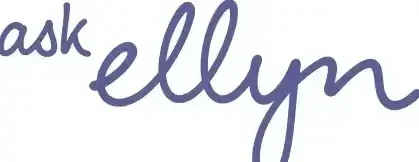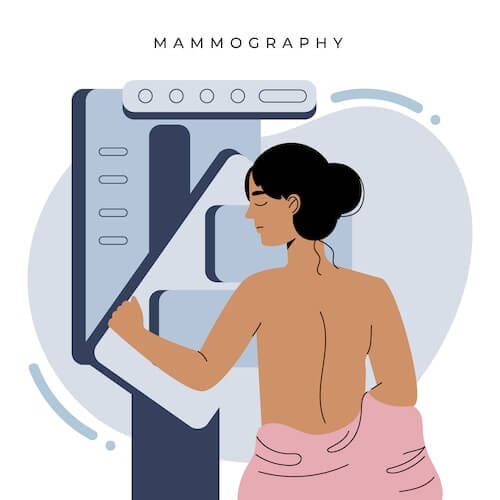Before my diagnosis with breast cancer, the disease was for me — as it is for most people — a single thing. Very quickly after learning I had cancer, I discovered there are many breast cancer types and sub-types, and each has its terminology and acronyms. The complexity of breast cancer has removed the one-size-fits-all approach to diagnosis and treatment. After I was diagnosed it surprised me was that there was no single playbook to follow. Treatment decisions are based on a highly elaborate workflow that considers many factors including the type, sub-type and stage of cancer, the size and number of tumours, the rate of cell division, the person’s age, and menopausal status, among others.
I have a black sense of humour so forgive me, but I’ll often joke that breast cancer has more acronyms than Starbucks. You’ll often find that “breasties” start using this lingo, and will often introduce themselves in that way to others diagnosed.
“Hi, I’m Ellyn, IDC, ER/PR+ Her2 negative…”
It’s weird and super bewildering at first. So here’s a breakdown to help you gain some understanding.
Please note, that I’m not a doctor, just sharing what I have learned on my journey with pointers to the experts. If you have concerns about your breast health, please refer to your doctor for expert advice!
Types of Breast Cancer
Breast cancer types are incredibly varied and are primarily classified through histopathology. These include Invasive ductal carcinoma (IDC) and ductal carcinoma in situ (DCIS), lobular carcinoma, triple-negative breast cancer and inflammatory breast cancer, and more rarely, Paget’s disease, Angiocarcinoma and Phyllodes tumour.
Invasive ductal carcinoma (IDC) is the most common form of breast cancer and is responsible for approximately 75% of diagnoses. This type of cancer starts in the milk ducts and then spreads into surrounding breast tissue. I was diagnosed with IDC.
Ductal carcinoma in situ (DCIS) also begins in the milk ducts, but in this case, the cancer is contained and has not spread to surrounding breast tissue. This is often spotted in the form of calcifications on a mammogram
Lobular carcinoma is a more rare form of breast cancer that begins in the glands of the breast, called lobules. It too can occur in situ or in an invasive form. It is also harder to pick up on a mammogram.
Inflammatory breast cancer is quite rare occurring in only a small percentage of cases. It is tricky to spot as it doesn’t present as a lump, but rather swelling or redness of the breast and often occurs in younger women, who sometimes mistake it for a breast infection or mastitis.
Paget’s disease of the breast is another rare form of breast cancer affecting the nipple and presents as a red scaly rash.
Angiocarcinoma of the breast starts in the blood or lymph vessels and can occur as a result of previous radiation of the breast. It too is very rare.
Phyllodes tumours of the breast are also exceedingly rare and start in the breast’s connective tissue. These are often benign.
Breast cancer subtypes
There are four categories of breast cancer subtypes. Each subtype has specific treatment modalities based on the features of the malignancy – its size, location, spread within the body, and molecular characteristics. The treatment pathway could encompass surgery, radiation, chemotherapy, hormone therapy, and other targeted therapies.
- ER-positive: Breast cancers that have estrogen receptors are called ER-positive (or ER+) cancers.
- PR-positive: Breast cancers with progesterone receptors are called PR-positive (or PR+) cancers.
- Hormone receptor-positive: If the cancer cell has one or both of the receptors above, the term hormone-receptive positive (also called hormone-positive or HR+) breast cancer may be used.
- Hormone receptor-negative: If the cancer cell does not have the estrogen or the progesterone receptor, it’s called hormone-receptor negative (also called hormone-negative or HR-).
Triple-negative breast cancer is a type of breast cancer where cancer is not estrogen or progesterone responsive and do not make the HER2 protein. This form of more rare cancer occurs in younger women, in black women and women with the BRCA mutation. It tends to grow and spread faster and has less treatment options, leading to a poorer outcome.
Remember, knowledge is empowering. It’s essential to be in tune with our bodies, get our mammograms, be informed, and advocate for ourselves. We are each unique, and our journeys will differ. On my journey, I found sources like Dr. Susan Love’s Breast Book incredibly helpful. It equipped me to understand all this terminology, my diagnosis, and the medical terminology surrounding it, and to ask appropriate questions during consultations with my healthcare team.
Final thoughts? Don’t shy away from gaining the knowledge you need to understand a breast cancer diagnosis. Knowledge is power. As I recounted in “Flat Please,” even in the hardest times, knowledge allows us to advocate for ourselves and take an active role in the diagnosis and treatment of our disease. It can alter your outcome for the better.




